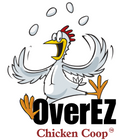Ensuring your chickens have a cozy and hygienic living environment is vital for their health and well-being. One of the key factors in achieving this is choosing the right bedding for their coop. With a variety of options available, it can be challenging to determine which bedding is the best fit for your flock. In this comprehensive guide, we'll explore different types of bedding, including the often-overlooked hemp bedding, highlighting their respective pros and cons to help you make an informed decision
.
Straw:
Pros: Straw is a popular and readily available bedding choice for chicken coops. It provides adequate insulation and is relatively affordable. Straw is also lightweight and easy to manage.
Cons: Despite its benefits, straw can break down quickly, leading to compacted bedding and odor issues. It may also harbor mold and mildew if it becomes too damp. Straw can be difficult to clean thoroughly due to its tendency to become matted, requiring more frequent bedding replacement. Additionally, straw may attract pests such as rodents or insects.
Pine Shavings:
Pros: Pine shavings are favored for their absorbency and natural resistance to bacterial growth. They emit a pleasant scent and are simple to spread and fluff, encouraging airflow in the coop. Additionally, pine shavings compost well, making them environmentally friendly.
Cons: Pine shavings may contain dust particles, which can exacerbate respiratory problems in sensitive chickens. Regular cleaning is necessary to prevent ammonia buildup and maintain cleanliness, adding to maintenance requirements. Disposal of used pine shavings may pose challenges due to their volume and weight. Additionally, improper storage of pine shavings can lead to mold or mildew growth, especially in humid environments.
Shredded Paper:
Pros: Shredded paper offers a cost-effective bedding solution and can be sourced from household waste. It provides adequate insulation and absorbs moisture reasonably well. Additionally, using recycled paper bedding is environmentally sustainable.
Cons: Shredded paper can become soggy quickly when exposed to moisture, leading to potential ammonia buildup and unpleasant odors. It lacks the cushioning provided by other bedding materials, potentially leading to discomfort for chickens. Due to its lightweight nature, shredded paper may be easily scattered around the coop, requiring frequent replenishment. Cleaning shredded paper bedding may be more labor-intensive compared to other options, as it tends to clump together when wet. Additionally, some types of ink used in printed paper may contain toxic substances that could be harmful to chickens if ingested. Therefore, it's crucial to use unprinted or non-toxic shredded paper for bedding purposes.

Sand:
Pros: Sand is gaining popularity as coop bedding due to its excellent drainage properties and low maintenance requirements. It doesn't compact like straw or shavings, reducing bacterial growth and odor. Sand also serves as a natural grit source for chickens.
Cons: Initial setup can be labor-intensive and costly. Sand can retain moisture in humid climates, leading to potential mold growth. It's also abrasive, which may cause foot abrasions in chickens with sensitive feet. Sand can be heavy to handle and dispose of during cleaning, and it may not provide sufficient insulation in colder climates. Additionally, sand particles can irritate chickens' respiratory systems if it becomes dusty. Regular sifting is necessary to remove feces and debris, adding to maintenance requirements.
Hemp Bedding:
Pros: Hemp bedding is a versatile and eco-friendly option that offers several advantages. It has exceptional absorbency, efficiently trapping moisture and reducing odor. Hemp bedding is also highly durable, lasting longer than traditional options. Additionally, it is dust-free, making it ideal for chickens and people.
Cons: While hemp bedding boasts numerous benefits, it may be less readily available and slightly more expensive initially. However, its longevity and superior performance often outweigh the higher upfront cost. Hemp can also be challenging to dispose of if you don’t have an area for composting.
Selecting the right bedding for your chicken coop requires careful consideration of factors such as cost, availability, and performance. Each bedding option has its unique advantages and drawbacks, so it's essential to assess your flock's specific needs and preferences. Whether you opt for the traditional straw or the innovative benefits of hemp bedding, providing a clean and comfortable coop environment is essential for keeping your chickens healthy and happy.

